The Great Overland Adventure heads Down Under
It’s been ages since i last came to Australia, probably over a decade, but I still remember my first time Down Under. I was barely six months into my very first job, so you can imagine the delight with which I packed a suitcase for Canberra, to report on our Indian MRF team’s maiden shot at the Asia Pacific rally championship (which they’d go on to win many, many times – they’re probably the winningest team in the championship, got to check on that). Anyway, it was a blast. Aussies are an incredibly outdoorsy bunch – they love their cars, sport, barbeques and beer. The sun is always out, the weather, at least during the rallies, was always nice, and every important city glistens against the oceans – except Canberra whose planners were so enthusiastic about parks that they even threw a lawn on top of the parliament house (the capital is also such a boring place that one of their Prime Ministers refused to stay there, preferring to commute from Sydney!). Most of all the Aussies are fun loving guys and it’s impossible not to be entertained by a lot whose standard response to anything is ‘no worries’.
“Can I have my steak medium rare?”
“No worries.”
“You mean to say the room doesn’t have an attached bathroom?”
“No worries mate, it’s just down the hall.”
“Was that a wasp that just stung me?”
“No worries mate, just ask for some ice at the bar.”
“How many kangaroos did you say you hit?”
“Two mate, but no worries the hopper stopper took it. Your cars … umm … don’t seem to have one.”
Err…
Drifting like Mad Max
We’ll get to the kangaroos later. Our journey starts where I left off all those years ago – with some motorsport action. Destination on day one in Brisbane on the east coast of Australia is the Queensland Motorsport Park for a spot of drifting with the On Track Drift school. Turns out Eugene Arendsen, a drifting champion who runs the school, was the stunt driver on Mad Max, Fury Road. And the cars we’d be drifting were rear-wheel drive R33 Skylines.
Our training starts with how to use the handbrake, feel the tail sliding, and using the foot brake to come to a stop before hitting any cones. Lesson two, park like Jackie Chan. Accelerate, dip clutch, big ’ol yank on the handbrake, slide the rear and just before the bollard, turn the steering (gently) to get the tail to slide and brake to a halt when you’re at a right angle. Easy-peasy. It’s followed by the J-turn – reverse at full clip, as fast as the car will go and looking only in the mirrors, dip clutch, slip into neutral, swing the steering, watch how the nose turns around, slip into first and go. The trick here is speed – go as fast as the car will in second gear and turn the steering as violently as you can. Also, once the nose has come around, the steering will be pointing straight ahead so you just have to gas it to carry on.
And finally the donuts. The turbo-charged RB26 engine has so much grunt, you gas it and the tail comes out. The trick is to catch the slide without over-correcting and then modulate the throttle to keep the tail sliding and oversteering around the cone with an armful of opposite lock. Not as easy as it sounds and in the short time we were there I just couldn’t get it right, so much for all my rally driving.
Then Eugene shows us how the big boys do it by drifting in tandem – first round the cone and then round the GLA. It’s incredible, the kind of car control you need to be able to drift millimetres away from the door of the car in front. It’s so much fun that I’m seriously thinking of getting (or building) myself a rear-wheel drive car to get the hang of this lark. Or maybe Mercedes will loan me an AMG to shag the rear tyres.
Surfer’s paradise
Half an hour out of Brisbane, on the M1 highway, begin the series of towns that together form the Gold Coast. It’s impossible to miss it, glitzy towers shimmering against the beautiful waters of the Pacific, all with a decidedly Miami beach vibe to it. Our plan was to head to Coffs Harbour where the producers had fixed up for Siddharth and I to kiss a dolphin but the lure of the beach was too much to resist. What was supposed to be a quick breakfast dragged on for hours as we got our feet wet, strolled down the promenade buzzing with joggers and got distracted by ladies in yoga pants doing their stretches.
And here’s something I learnt – Surfer’s Paradise was once called Elston. Imagine going half way across the world to the beaches of… Elston, which is why the city fathers renamed the town after a groovy hotel on the shore. Surfer’s Paradise picked up in the fifties, followed by a construction boom in the seventies, and then the arrival of unsavoury elements of all sorts. There are now, allegedly, so many mobsters around that you don’t want to get into a fender bender of any sort here.
Sydney v Melbourne
“In Melbourne, all views are equally depressing, so there’s no point in having one … No one in Sydney ever wastes time debating the meaning of life – it’s getting yourself a water frontage. People devote a lifetime to the quest.”
David Williamson, one of Australia’s best known dramatists is right – Sydney is all about the water. The view of the Opera House. The grand old Harbour Bridge. The bewitching blue waters that lap on to Darling Harbour. The seal that lazes on the steps near the Opera House. It is a spectacularly grand and opulent sight, and everything looks even better when you take a boat out into the harbour.
Whatever has to be said about the Opera House has already been said, so I won’t go into it except reiterating that it really is as dramatic as every travel magazine and blog has made it out to be. For me, though, the Harbour Bridge is an even more magnificent sight – a hulking great iron structure that looks like the heaviest thing on earth. The arch alone weighs 30,000 tonnes. Four great stone pillars support the bridge on either end. The metal plates and girders are held together by six million rivets, each nearly the size of a football. And you can walk the entire arch. It’s an unshakable symbol of might – of engineering prowess and industrial strength. You don’t go to war with people capable of building such edifices.
Yet for everything that Sydney has to offer, I prefer Melbourne. It’s the same Delhi versus Mumbai debate we have back at home, and it all boils down to personal preference. Melbourne has a less hectic pace of life, all the random art installations dotted around the city make it more interesting, there’s a more cultural vibe to it, the bars we went to in the evening were more friendly and – I’m told – things are a fair bit cheaper too.
Melbourne Cricket Ground
My world doesn’t come to a stop when a man hurls a ball at great speed while another man with mattresses strapped to his feet tries to club it out of the way of ten jauntily uniformed guys. But I have to say there’s history in the game, and it’s all captured beautifully at the Melbourne Cricket Ground. The MCG is as old as the founding of the city (the Brits really liked their cricket!) and the pictures and paintings in the great halls capture the evolution of Australia’s two favourite games (cricket and Aussie Rules Football), commemorate the iconic batting and bowling performances at the grounds (only test cricket counts) and pay homage to the masters. They’re particularly proud of a picture of Don Bradman and Sachin Tendulkar shot on the former’s 90th birthday, of which there are only four copies in existence, and in front of which every Indian goes mental with his camera phone. The MCG has become a major tourist destination for us Indians, and you don’t have to be a fan of the game to take in the magnificence of the member’s lounge, peek into the commentary boxes and marvel at the views the journos get, poke about the changing rooms, wander through the stands and whistle at the majesty of the ground itself.
In another first for me, I interviewed John Hastings – the Aussie fast bowler who played Twenty20 cricket for KKR before injuring his ankle. I can’t vouch for how good a player he is, but I’d be very worried if all six-and-a-half feet of Aussie brawn came charging at me with a bright red ball in his hand. What I can tell you is that he’s a very nice bloke, very friendly, with none of the arrogance our lot seems to have in plenty. Siddharth poses a few interesting questions, and then it’s my turn and I embarrass our cricket-worshipping nation by drawing some painfully obtuse racing-related parallels. “Like racing drivers tend to go faster on their home tracks, do you have a home advantage while playing at the MCG?”
Food, food, food
There’s no such thing as Australian cuisine, yet their food is great, and a lot of it has to do with MasterChef. Ever since the series took off, restaurants all over the country have been paying more attention to quality, presentation, and the small little things that elevate a good meal to greatness. MasterChef Australia is one of the country’s biggest exports and, in fact, the second largest viewership for the series comes from India. We couldn’t go to the sets of the show, but we did visit George Calombaris’ Greek restaurant Gazi in the heart of Melbourne, and since we landed at prep time, head chef Guillaume threw us an apron and showed us how to make two of Gazi’s acclaimed dishes. The signature fries are really easy-peasy – first fry the fries, then throw in a generous amount of garlic oil, sprinkle oregano salt, add more garlic oil, top it with feta cheese and you have ridiculously delicious fries. Even better were the crabs – soft shell crabs dipped in Aleppo flour (how do they get that out of war torn Syria?), seared in olive oil and folded into a naan-kind of bread that’s seasoned with Japanese mayo and herbs. My mouth is watering just typing this out!
Over the two weeks in Australia, I put on nearly five kilos and don’t need a belt to hold up my jeans anymore. Gazi was the relatively healthy food, the major part of our road trip consisted of a late breakfast of bacon and eggs, no lunch as we invariably were running late for something, and a medium rare hunk of steak for dinner. I loved it! And now my wife has me on a salad and roast chicken diet.
The mountain
It’s called the Blue Hell – a track as dangerous as the Green Hell (the Nurburgring) and perched across the Blue Mountains, hence blue. If you’re a PlayStation regular you’ll be familiar with the Mount Panorama circuit, at Bathurst – definitely one of the world’s great street circuits alongside Monaco, Spa, Le Mans and Macau. And it’s a proper public road. Within the loop of the 6.2 kilometre circuit are vineyards and a homestay that urged us to buy some of their home made jams. It’s only closed on race days, and so we set off in our Mercs – fully-laden with all our luggage and equipment, for a few laps.
Corner one is called Hell Corner, in the old days there used to be tree stump at the apex and if a biker hit it, well… you were going to be in hellish agony. The following straight has two crests and back in the good old days, before proper aerodynamics, cars used to take off on the second one. From there, the track climbs up 570 feet with massive camp grounds on the right, housing maniacal spectators who camp out there for a full week for the Bathurst 1000km races for the V8 supercars – one of Australia’s biggest motorsport events. Towards the top the track narrows. It gets so tight that if you spin you’ll block the entire track, and there’s absolutely no run-off. And then the downhill part is incredibly scary – tight, zero run-off (just walls, and if you fly over that you’re down into the valley), and astonishingly quick. A track like this will never be made in the modern era, that much I can tell you. And like Australia, it’s quirky – the hairpin left before the main straight is called Forrest’s Elbow after Jack Forrest lost his elbow after crashing on his bike. And the straight is called Conrod Straight after a bike blew its con-rod in a race in the thirties. This straight is also unbelievably long – 1.9-kilometres – and to slow things down, there’s now a chicane in it. Except it’s designed in such a way that the entry to the chicane is now the fastest corner in tin-top racing – cars entering at nearly 295kmp/! Bikes, as you can imagine, are now banned from racing here – it’s just too freaking dangerous.
Commodore v Falcon
Bathurst also has a lovely museum dedicated to Australia’s great drivers and riders – of which there have been plenty – and their bikes and cars. But, most of all, it’s a shrine to the Holden versus Ford battles that are the cornerstone of the V8 Touring Car series. Holden is a GM subsidiary that makes the Commodore, while Ford has its own big four-door saloon called the Falcon. Both these are Australia-only cars, and they have a unique spin-off – the ute. Half car, half pick-up, these rear-drive things are as popular as pick-ups in the US. And Holden even has an SS variant, with the Corvette’s LS3 V8 lump in it!
Another thing that you find a lot of in Australia are Japanese cars – it’s like the last export bastion of the Japanese car industry. Nowhere in the world have I seen the new Mitsubishi Outlander SUV, but in Australia they’re everywhere. There are tons of Subaru Imprezas (and conversely very few Mitsubishi Evos), plenty of Nissan 370Zs (and not one GT-R that I saw), Swifts, old Swifts (our Esteem and Baleno, but in hatchback form), and, of course, Camrys and Accords. But Aussies don’t like it when the foreign cars barge into their local racing – like when the Japanese came and demolished everything in touring car races, first with the turbo-charged Datsun and then the GT-R. When Audi came with the A4 Quattro, the Aussies had enough and Holden and Ford went and formed their own series for their own cars. V8 Touring Cars now has a huge, and I mean incredibly huge, following in Australia – and the drivers are legends.
Sadly, though, this will be the last year of that rivalry. Holden will stop making the Commodore in Australia next year, and so will race something with the Chevrolet bow-tie on the nose while Ford will also discontinue building the Falcon and will instead race the Mustang. And, thus, ends car manufacturing in Australia.
Great driving road
I’ll be brutally honest here, driving in Australia is boring as hell. The maximum you can do on the motorway is 110km/h, most places it’s between 80 and 90km/h. Out of Brisbane, the M1 is being widened (in fact there’s a major focus on infrastructure throughout the country to revive the economy) and that means plenty of diversions and an even slower average speed. The roads, even the diversions, are brilliantly smooth, amazingly well marked (among the best in the world I have to say) and not a speed breaker or pothole in sight, but it’s boring. Really, really boring.
And then on day three, we headed out of Sydney into the Blue Mountains and for the first time I turned the steering wheel. This is the old Cox’s road, built by thirty convicts who won their freedom by cutting a path through the rugged and treacherous mountains in six months. The road passes through quaint villages and some awesome sights like the Three Sisters – sort of like the look-outs in Mahabaleshwar and Panchagni, but on a much grander scale and with no Lays wrappers and Coke bottles littered all over the place.
But if there’s only one drive you can do, it has to be the Great Ocean road. I’ve read so much about it, seen so many pictures, but still the first time you hit the Pacific coast, three hours out of Melbourne on the way to Adelaide, your mind is blown. For the next three hours the road hugs the mountainside, snaking sinuously past awesome look-out points, waves crashing against the cliffs on your left, camper vans lazing by the back waters on the right. It’s properly awesome and gets even more otherworldly at the Twelve Apostles.
All those Great Ocean road pictures have the Apostles, essentially limestone pillars, sticking out of the ocean, getting plastered silly by the waves, eroding at the rate of 30cm every year. Some even let out a big old sigh and crumbled into the ocean in what I can only assume to be a spectacular event. Today, eight Apostles make up one of the world’s great sights, and a few kilometres further on is the so-called London Bridge, except London Bridge too came crashing down some years ago, marooning two tourists on the other side. You expect these to be rather worrisome events, but not to the Aussies. “No worries mate, we sent a chopper to pick them up.”
The ute is unique to Australia – half car, half pick-up, these rear-drive things are as popular as pick-ups in the US. And Holden even has an SS variant, with the Corvette’s LS3 V8 lump in it! And, don’t miss the ‘Hopper Stopper’ in front of the Holden ute pictured above.
Next month we head to Uluru on one of the loneliest roads in the world, back down to Port Agusta and then west all the way to Perth.
Click here to see the previous editions of the GLA Adventure stories



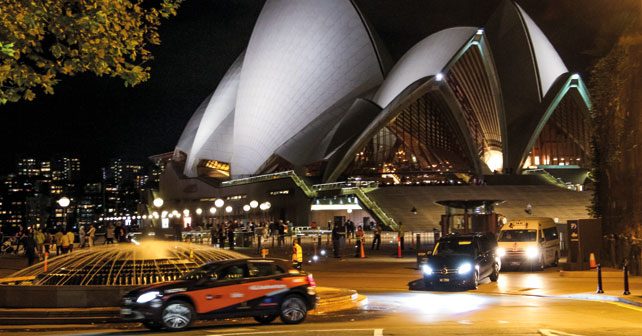


















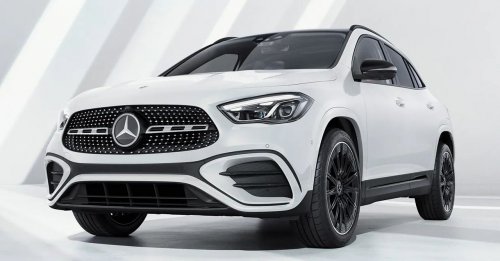
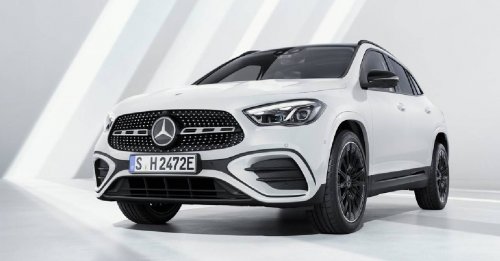

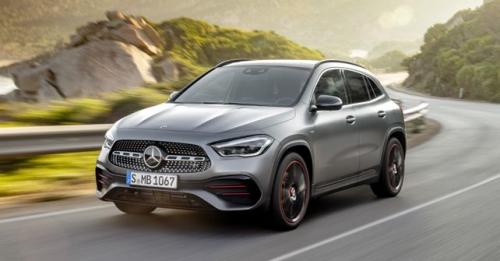
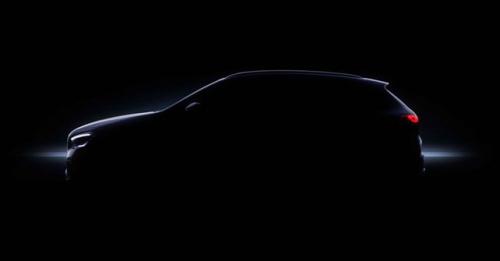














Write your Comment